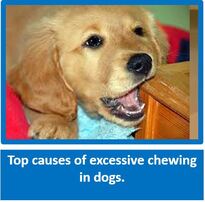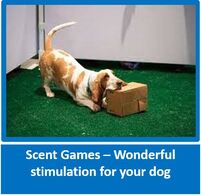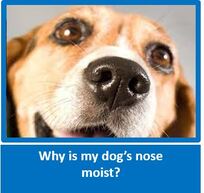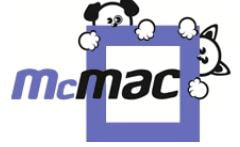
Teaching the swap exercise is such an important skill for your dog to have. The more different toys and objects you use, the more you are ingraining the behaviour of a pup or dog releasing an object. We have a vast array of top quality toys, ranging from soft cuddling one's - those that look like bones, and of course for the professional chewer, that you can practice with. In addition we supply just about everything for your dog, cat or small critter that you could ever need. www.mcmac.co.za
Preventing Resource Guarding with the Swap Exercise
By Scotty Valadao (Animal Behaviour Consultant (Canine) (ABC of SA™)
By Scotty Valadao (Animal Behaviour Consultant (Canine) (ABC of SA™)
.
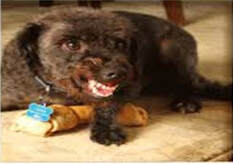
When I was a child, I was always told to avoid any dog chewing on a bone or eating. Now while this is good advice when one does not know the dog, it is not a situation one wants to encourage with our own dogs. Unfortunately, not all owners are familiar with this easy exercise that can go a long way to avoiding, and changing resource guarding of food and objects.
If we look at a wolf pack or dogs in the wild, what people are not aware of is that it is more than likely that a true alpha dog will be the dog that will share its bone with any other dog in the pack. Why, you may ask? Well, if he wants it back, he just takes it, no arguments or discussions! When a dog does exhibit guarding problems, this is a behavioural concern and should not be considered normal behaviour for family dogs. If, after trying the Swap exercise there is no improvement, then a behaviour consultant should be called on for assistance. Dogs do not only guard food, they can guard toys, beds, favourite positions and it is not unusual for dogs to become possessive of certain people. This is a form of resource guarding and professional help is needed.
I am a firm believer that prevention is better than cure and using the Swap exercise below, as well as the food bowl exercise in the article Feeding the Pup section, will go a long way to ensuring that the pup does not start resource guarding. The main reason that dogs do not relinquish objects is because we never give them back – we take them away!
Swap Exercise
This is a wonderful exercise whereby you can teach your puppy to drop whatever is in its mouth without getting into a fight. The sooner this is started, the better. This gives you an excellent method of getting unwanted or dangerous objects out of your puppy’s mouth without a tug of war and without injury.
Do this initially when your pup is hungry, not just after a full meal. Have a toy he likes (but not his favourite), play a bit of tuggy with him, then when he has it in his mouth and you are holding the other side, show him the treat (here make it something worthwhile, not dry dog food), say ‘swap’ and as he drops the object, give him the treat and praise at same time 'good swap', and here this is very important, immediately give him back the toy! The pup has now learnt that not only does he get a reward when he gives over an object, but he actually gets rewarded for doing it, praise from his person, and he gets the object back! Practice this over and over, gradually working up to really favourite toys.
If your dog is reluctant to swap his favourite toy, then simply have two of the same. If the pup is reluctant to give up its most favourite toy, go back a step and start working with two objects that are the same, but not the same value, and not as important to the pup. Once the pup has mastered this, it will be ready to start swapping its favourite object. He swaps it, gets rewarded and gets the same object back. What fun. This is another way to start the retrieve exercises when your dog gets a bit older. Don’t rush this, all learning should be fun – going into matric when you are only physically, emotionally and mentally to cope with standard four, would not be an advantage at all! The dog is always rewarded in some way for giving up an object – the more the object is valued, the bigger the reward.
What do you do when you have a pup that has been with you for a while and it has already started to show resource guarding tendencies towards a favourite bone or toy? Depending on the severity of the resource guarding, you can either start with the exercises covered in the Swap section, the information below or else call in a behaviourist for help. The quicker this problem is solved the better. This is an area that can quickly escalate and end up in reactive behaviour. To a dog the behaviour of growling, snarling or biting worked – the person left and the dog was left in peace, therefore reinforcing the reactive behaviour and making it more likely to happen again, and unfortunately, the degree of reactive behaviour can increase.
In addition to practising the exercises in the Swap section ensure that when you have had enough, you issue the cue of ‘finished’ and this object belongs to you, the person in charge,, and it is at your invitation only that the pup is allowed to play with this object. This means that from now on, the favourite object is always taken away by the owner at the end of the play session. Keep on playing with the pup with this object, but on your terms only. This will also assist in raising the owner’s status in the human/canine social structure and make the pup more secure. A quick note - we are not pack leaders - we are totally different species.
One of the worst things an owner can do if a pup will not let go of an object is to have a fight with the pup, almost like a game of tuggies. This will just increase the behaviour of guarding and often ends up with the owner totally frustrated and even getting angry and taking the object by force. All this does is teach the pup that he was correct not to relinquish the object in the first place and this can lead to reactive behaviour.
Another behaviour that owners engage in when they cant get something out of the pup’s mouth is to chase the pup. This also teaches the pup that running away works, and is the beginning of damaging your recall. Rather look for something that the pup really enjoys, clap your hands and start running away, and as the pup starts to follow, the owner starts a game with the pup and then does a swap. Everybody wins!
We need to bear in mind that pups learn from repetition and these exercises need to be taught over and over (did I mention over?).
With all the above, it must not just be the owners who practice these exercise, the ideal scenario is for visitors, especially children (under supervision of course) to engage in these exercises with pups. Another point to remember is not just to engage in these exercises in the home, practice them in the garden, at puppy school, while going for walks etc. When I walk my own dogs in the veld where they more often than not find totally unacceptable objects to pick up (unacceptable to me at least!), I always have some treats in my moon bag/pocket and my dogs will be appropriately rewarded. I have been lucky (practice perhaps?) that when my male finds something he knows I will not approve of, he brings it close to where I am to see whether or not I reward – which I always do – who says dogs are not smart!
If we look at a wolf pack or dogs in the wild, what people are not aware of is that it is more than likely that a true alpha dog will be the dog that will share its bone with any other dog in the pack. Why, you may ask? Well, if he wants it back, he just takes it, no arguments or discussions! When a dog does exhibit guarding problems, this is a behavioural concern and should not be considered normal behaviour for family dogs. If, after trying the Swap exercise there is no improvement, then a behaviour consultant should be called on for assistance. Dogs do not only guard food, they can guard toys, beds, favourite positions and it is not unusual for dogs to become possessive of certain people. This is a form of resource guarding and professional help is needed.
I am a firm believer that prevention is better than cure and using the Swap exercise below, as well as the food bowl exercise in the article Feeding the Pup section, will go a long way to ensuring that the pup does not start resource guarding. The main reason that dogs do not relinquish objects is because we never give them back – we take them away!
Swap Exercise
This is a wonderful exercise whereby you can teach your puppy to drop whatever is in its mouth without getting into a fight. The sooner this is started, the better. This gives you an excellent method of getting unwanted or dangerous objects out of your puppy’s mouth without a tug of war and without injury.
Do this initially when your pup is hungry, not just after a full meal. Have a toy he likes (but not his favourite), play a bit of tuggy with him, then when he has it in his mouth and you are holding the other side, show him the treat (here make it something worthwhile, not dry dog food), say ‘swap’ and as he drops the object, give him the treat and praise at same time 'good swap', and here this is very important, immediately give him back the toy! The pup has now learnt that not only does he get a reward when he gives over an object, but he actually gets rewarded for doing it, praise from his person, and he gets the object back! Practice this over and over, gradually working up to really favourite toys.
If your dog is reluctant to swap his favourite toy, then simply have two of the same. If the pup is reluctant to give up its most favourite toy, go back a step and start working with two objects that are the same, but not the same value, and not as important to the pup. Once the pup has mastered this, it will be ready to start swapping its favourite object. He swaps it, gets rewarded and gets the same object back. What fun. This is another way to start the retrieve exercises when your dog gets a bit older. Don’t rush this, all learning should be fun – going into matric when you are only physically, emotionally and mentally to cope with standard four, would not be an advantage at all! The dog is always rewarded in some way for giving up an object – the more the object is valued, the bigger the reward.
What do you do when you have a pup that has been with you for a while and it has already started to show resource guarding tendencies towards a favourite bone or toy? Depending on the severity of the resource guarding, you can either start with the exercises covered in the Swap section, the information below or else call in a behaviourist for help. The quicker this problem is solved the better. This is an area that can quickly escalate and end up in reactive behaviour. To a dog the behaviour of growling, snarling or biting worked – the person left and the dog was left in peace, therefore reinforcing the reactive behaviour and making it more likely to happen again, and unfortunately, the degree of reactive behaviour can increase.
In addition to practising the exercises in the Swap section ensure that when you have had enough, you issue the cue of ‘finished’ and this object belongs to you, the person in charge,, and it is at your invitation only that the pup is allowed to play with this object. This means that from now on, the favourite object is always taken away by the owner at the end of the play session. Keep on playing with the pup with this object, but on your terms only. This will also assist in raising the owner’s status in the human/canine social structure and make the pup more secure. A quick note - we are not pack leaders - we are totally different species.
One of the worst things an owner can do if a pup will not let go of an object is to have a fight with the pup, almost like a game of tuggies. This will just increase the behaviour of guarding and often ends up with the owner totally frustrated and even getting angry and taking the object by force. All this does is teach the pup that he was correct not to relinquish the object in the first place and this can lead to reactive behaviour.
Another behaviour that owners engage in when they cant get something out of the pup’s mouth is to chase the pup. This also teaches the pup that running away works, and is the beginning of damaging your recall. Rather look for something that the pup really enjoys, clap your hands and start running away, and as the pup starts to follow, the owner starts a game with the pup and then does a swap. Everybody wins!
We need to bear in mind that pups learn from repetition and these exercises need to be taught over and over (did I mention over?).
With all the above, it must not just be the owners who practice these exercise, the ideal scenario is for visitors, especially children (under supervision of course) to engage in these exercises with pups. Another point to remember is not just to engage in these exercises in the home, practice them in the garden, at puppy school, while going for walks etc. When I walk my own dogs in the veld where they more often than not find totally unacceptable objects to pick up (unacceptable to me at least!), I always have some treats in my moon bag/pocket and my dogs will be appropriately rewarded. I have been lucky (practice perhaps?) that when my male finds something he knows I will not approve of, he brings it close to where I am to see whether or not I reward – which I always do – who says dogs are not smart!


